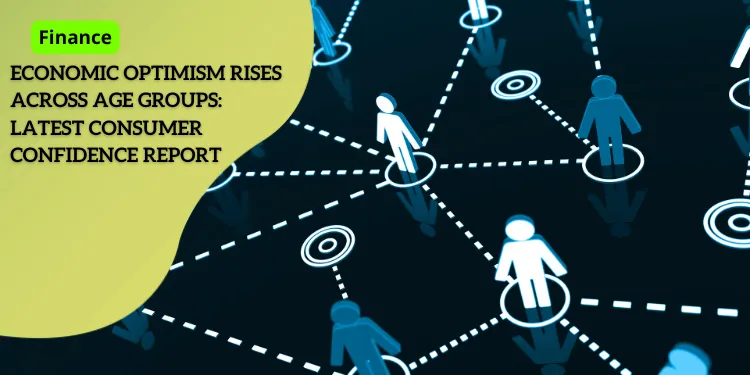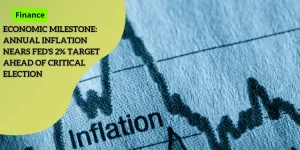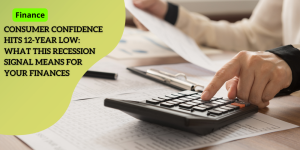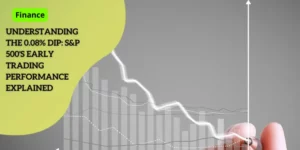Economic Optimism Rises Across Age Groups: Latest Consumer Confidence Report

Anúncios
October 2023 witnessed a stunning rise in consumer confidence, marked by the Conference Board’s confidence index skyrocketing to an impressive 108.7.
This substantial jump represents the largest monthly gain since March 2021, signaling a robust enhancement in how Americans view the present economic landscape.
Anúncios
Surge from September to October
The significant uptick in the confidence index from 99.2 in September to 108.7 was primarily driven by a sharp increase in the present situation component.
This component, which gauges consumers’ perceptions of current economic conditions, leaped by 14.2 points to reach 138.
Anúncios
Not only did this surge indicate positive sentiment about ongoing economic conditions, but it also reflected an overall improvement in consumers’ outlook for the near future.
Perceptions Shaped by Economic Climate
The jump in consumer confidence is somewhat surprising given that previous polling had shown widespread dissatisfaction with the economy.
However, the latest data suggests a reversal of sentiment, possibly influenced by better-than-expected economic indicators and favorable labor market conditions.
The Conference Board’s chief economist, Dana Peterson, noted that all five components of the index showed improvement, highlighting enhanced consumer appraisals of both the business environment and employment conditions.
Present and Future Sentiment
While the present situation component saw a remarkable increase, sentiment about the future also experienced a boost, rising by 6.3 points to 89.1.
This figure is well above the 80 level, often viewed as a threshold indicating potential recession risks.
The higher future sentiment indicates that consumers are more hopeful about upcoming business conditions and their own financial situations.
Broad-Based Confidence Gains
The confidence gains spanned across various demographics, with the most notable increase among consumers aged 35-54.
Another group that showed consistent optimism was those earning over $100,000 annually, aligning with broader trends of improved economic sentiment across most income levels and age ranges.
Economic Indicators Support Confidence
Supporting this surge in confidence are various economic indicators pointing towards growth and stability.
For instance, the GDP growth forecast for Q3 2024 predicts a 3% increase, while consumer spending is anticipated to rise by 3.2% in the third quarter.
These figures provide a strong foundation for the heightened consumer confidence, emphasizing a positive outlook despite ongoing concerns about inflation and cost of living.
As we move forward, the relationship between consumer confidence and labor market performance will be explored in greater depth, highlighting the intricate dynamics that fuel economic optimism.
Demographic Breakdown of Confidence Gains
Rising Optimism Among Middle-Aged Consumers
One of the standout statistics from the recent consumer confidence spike is the marked optimism among consumers aged 35-54.
This age group has shown the strongest confidence boost, reflecting their improved perception of both the present economic conditions and future outlook.
The confidence uptick for those in their mid-career years likely stems from increased job stability and clearer career trajectories.
These individuals are generally balancing family responsibilities and savings, adding layers of complexity to their economic sentiments.
Thus, the positive shift indicates broader economic benefits impacting daily lives and long-term financial planning.
Consistent Optimism in Higher Income Brackets
Consumers earning over $100,000 annually also reported consistent growth in confidence.
This income group typically enjoys greater financial security, allowing them to weather economic fluctuations better.
The surge in optimism within this demographic suggests a stable economic environment where high earners feel secure in their investments, savings, and spending power.
This increased confidence often translates to higher consumer spending, which can further boost economic growth.
Broad-Based Improvement Across Demographics
While middle-aged consumers and high earners lead the confidence gains, there are broader improvements across most age groups and income levels.
This widespread optimism is a positive sign for the overall economy.
The general uplift in consumer confidence means that various segments of the population feel more secure about their financial situations, which can drive up consumer spending and stimulate economic growth.
Broad-based confidence gains help ensure that the economic recovery is inclusive and sustainable, benefiting a wider range of people.
Together, these demographic insights reveal a more comprehensive picture of why consumer confidence is surging.
It’s not just one group feeling the improvement—there’s a palpable sense of optimism spanning different ages and income levels.
This broad-based confidence boost is likely to have far-reaching implications on spending patterns and economic dynamics as we move forward.
Labor Market Performance
As we dive into the labor market’s current performance, it’s clear to see significant changes from the previous year.
Job openings saw a notable decline, sinking to 7.4 million in September compared to 9.3 million the same month last year.
This drop indicates that employers have found it easier to fill positions, prompting them to scale back on the number of vacancies.
Growth in Fragile Sectors
Despite the overall drop in job openings, certain sectors continue to show strong growth.
Hospitality, healthcare, and government sectors have been resilient, consistently adding new jobs.
This growth showcases their crucial role in maintaining and improving the labor market stability, even amid broader fluctuations.
Bright Spots in Transportation and Engineering
Transportation, warehousing, and professional fields like engineering have shown notable improvements in recent months.
These sectors are not just stabilizing but are contributing to a healthy employment environment.
This upward trend in specialized fields indicates a positive shift, demonstrating that certain areas of the labor market are thriving despite challenges in others.
Cautious Yet Continuing Hiring
Employers across the board continue to hire, albeit more cautiously than in previous years.
The moderation in hiring activity reflects a balanced approach to managing economic uncertainties while still seeking to meet business needs.
According to Ger Doyle of Experis North America, this pattern represents a labor market demonstrating resilience and adaptability.
Overall, the labor market showcases a mix of caution and optimism.
Employers are navigating through economic shifts with strategic hiring, while sectors like hospitality, healthcare, government, transportation, warehousing, and engineering lead the way in job creation.
This dynamic paints a diverse and hopeful picture for the workforce.
Economic Indicators and Projections
GDP Growth Forecast for Q3 2024
Looking ahead to 2024, the economic outlook remains positive with a GDP growth forecast of 3% for the third quarter.
This projection reflects robust economic activity, driven by strong consumer spending and stable investments.
Historically, a 3% GDP growth is a solid indicator of an expanding economy, showing that the economic engines are firing on multiple cylinders.
This growth rate is significant, especially considering the economic turbulence experienced in recent years.
Thus, if the projection holds, it bodes well for sustained economic health through 2024 and beyond.
Rising Home Prices
Another key economic indicator, home prices, has continued to climb.
In August, home prices rose at an annual rate of 4.2%, as measured by the S&P CoreLogic National Index.
This increase is slightly slower than the 4.8% pace observed a month earlier but still indicates a robust housing market.
Major cities like New York, Las Vegas, and Chicago have led these gains with notable increases.
However, regions like Denver saw minimal growth, indicating some variability in the market.
The consistent rise in home prices suggests heightened demand and a competitive housing market, even as mortgage rates fluctuate.
Consumer Spending Expectations
Consumer spending is another critical component of economic health, and it is expected to rise by 3.2% in the third quarter.
This uptick highlights continued consumer confidence and willingness to spend, driven by improving job markets and income growth.
Increased consumer spending typically translates into higher economic output, as it stimulates demand for goods and services across various sectors.
This anticipated rise in spending further underscores the optimistic economic projections for the near future.
This data presents a promising picture of economic health, balancing growth in GDP, rising home prices, and increased consumer spending.
Together, these indicators suggest a resilient economy capable of sustaining and overcoming potential hurdles in the coming months.
Election Impact and Economic Sentiment
Economic Strength and Incumbent Advantage
A robust economy generally bodes well for the incumbent party.
Historically, voters have shown a tendency to favor the current administration when the economy is performing well.
The recent rise in the Conference Board’s consumer confidence index to 108.7 in October, from 99.2 in September, underscores a growing optimism about economic conditions, which could benefit the incumbents.
Inflation and Cost of Living Concerns
Despite the positive economic indicators, inflation and the cost of living remain top concerns for voters.
This year’s election discourse has been dominated by discussions on rising prices and their impact on household budgets.
Consumers are feeling the pinch, even as overall economic confidence rises.
The duality of a strong economic performance and persistent inflation creates a complex backdrop for the upcoming elections.
Market Volatility and Electoral Uncertainty
Market volatility is a clear reflection of the uncertainty surrounding the election outcomes.
Investors and financial markets are often skittish in the lead-up to elections, as the potential for significant policy shifts looms large.
Recent fluctuations in bond yields and stock indices underscore the heightened tensions as election day approaches.
Analysts caution that this volatility may persist until a clear electoral outcome is achieved.
In conclusion, while the economic performance signals strength, the undercurrents of inflation and market uncertainty reveal a more nuanced picture.
As we explore further, the specifics of economic projections and performance indicators will offer deeper insights into what lies ahead.






